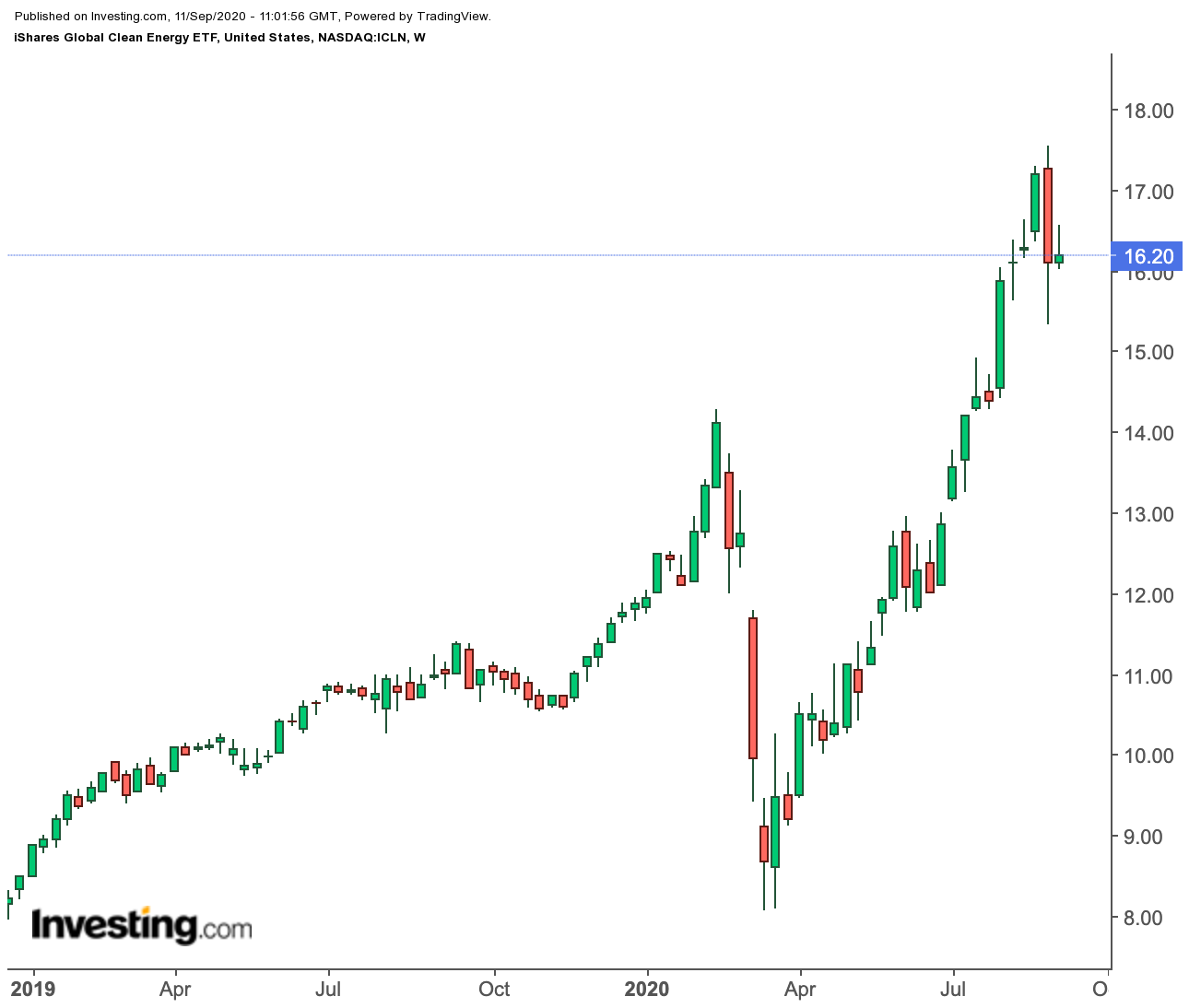Investor appetite for clean energy shares is on the rise. The industry, also known as alternative or renewable energy, is fast developing, both due to increased interest in socially-responsible investing and the growth in the sector.
As well, as wildfires continue to ravage the Western US (similar to last year’s catastrophic fires in Australia), energy issues related to climate change add to concerns.
The Center for Climate and Energy Solutions notes:
“Renewable energy is the fastest-growing energy source in the United States, [having increased] 100 percent from 2000 to 2018.
Global discourse about the industry typically centers around climate change, depletion of fossil fuels, energy security concerns, technological innovation, and the volatile prices of petroleum-based fuel. Today, we’ll look at this space and discuss two exchange-traded funds (ETFs) that may pique long-term investors’ interest.
Why Invest in Clean Energy Companies?
The Natural Resources Defense Council (NRDC) highlights “clean energy comes from natural sources or processes that are constantly replenished.”
These low- or zero-emission sources include solar, wind, solar, water, hydroelectric, geothermal, or biomass energy.
In its Global Energy Review, dated April 2020, the International Energy Agency (IEA) says:
“The share of renewables in global electricity generation jumped to nearly 28% in Q1 2020 from 26% in Q1 2019… Renewable energy has so far been the energy source most resilient to Covid‑19 lockdown measures.”
Readers are likely to already be familiar with companies like Brookfield Renewable Partners (NYSE:BEP), one of the world’s largest publicly traded renewable energy companies, Canadian Solar (NASDAQ:CSIQ), a Canada-based solar power company, First Solar (NASDAQ:FSLR), one of the leaders in developing thin-film solar panels, and NextEra Energy (NYSE:NEE), a generator of renewable energy from the wind and sun.
Clean energy may be used for providing electricity, powering electric vehicles (EVs), and in industry. Here are two exchange-traded funds that have seen solid momentum in 2020.
1. iShares Global Clean Energy ETF
- Current price: $16.20
- 52-week range: $8.08–$17.55
- Dividend yield: 0.82%
- Expense ratio: 0.46% per year, or $46 on a $10,000 investment
The iShares Global Clean Energy ETF (NASDAQ:ICLN) provides exposure to global businesses that produce energy from solar, wind, and other renewable sources.


ICLN, which has 30 holdings, tracks the S&P Global Clean Energy Index. In terms of country allocation, the US tops the list with over 40%, followed by China (11.20%) and New Zealand (6.95%). The top three sectors of the fund include Renewable Electricity (36.86%), Semiconductor Equipment (16.81%), and Electric Utilities (15.03%).
The fund’s net assets are close to $1.3 billion with the ten largest holdings constituting over 50% of that figure. Top three names are Sunrun (NASDAQ:RUN), Plug Power (NASDAQ:PLUG), and SolarEdge Technologies (NASDAQ:SEDG).
So far in the year, ICLN is up close to 40%. Since the lows seen in March, the price has in fact more than doubled. Therefore, short-term profit taking is likely in the fund.
Respective trailing P/E and P/B ratios of 24.43 and 2.71 as well as short-term technical analysis further suggest that a price drop of 5-7% is possible. A price decline toward $15 or even below would make the fund more attractive for long-term investors.
2. VanEck Vectors Low Carbon Energy ETF
- Current price: $100.52
- 52-week range: $49.81–$111.38
- Dividend yield: 0.36%
- Expense ratio: 0.62% per year, or $62 on a $10,000 investment
The VanEck Vectors Low Carbon Energy ETF (NYSE:SMOG) provides exposure to global firms in the alternative energy space, which includes power derived principally from bio-fuels (such as ethanol), wind, solar, hydro and geothermal sources.


SMOG, which has 30 holdings, follows the Ardour Global Extra Liquid Index. In terms of country allocation, the US tops the list with over 70%, followed by Denmark (9.58%) and Sweden (4.50%).
The top three sectors of the fund include Industrials (43.2%), Information Technology (28.4%), and Consumer Discretionary (16.50%). The fund’s net assets are close to $141 million with the ten largest holdings constituting over 65% of that figure. Top three names are Tesla (NASDAQ:TSLA), Vestas Wind Systems A/S (CSE:VWS), and Eaton (NYSE:ETN).
Year-to-date, SMOG is up over 35%. Like ICLN, since early spring, it has also doubled in price. Trailing P/E of 33.37 and P/B of 4.33 make the fund pricey. In the coming weeks, a drop toward the $95-level or even below is possible, which would mean a better entry point for potential investors.
Bottom Line
In recent years, the clean energy sector has undergone substantial developments and trends. We are likely to witness substantial growth in the importance of this industry in the coming years. Therefore, long-term investors may do further due diligence on various stocks and funds, with a view to buy the dips in robust names.
View: Source
View: More news



